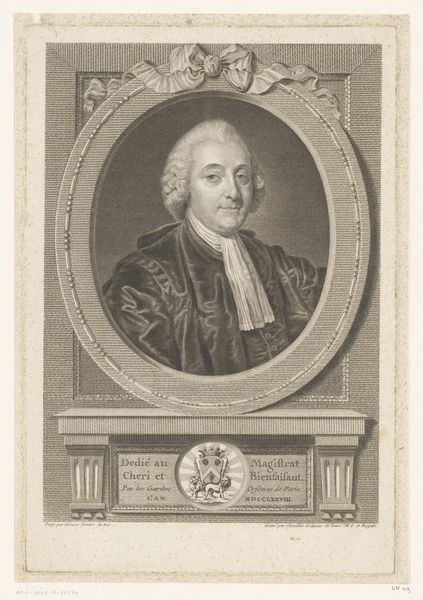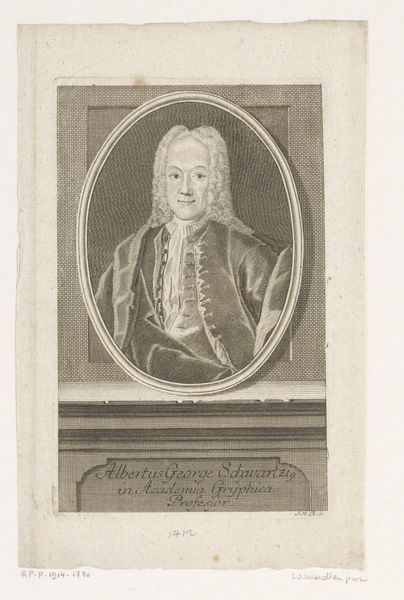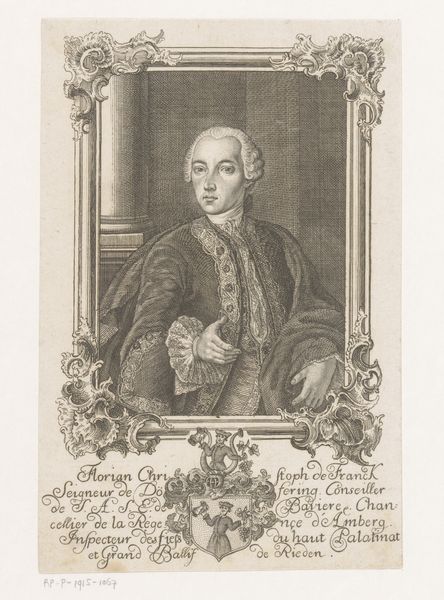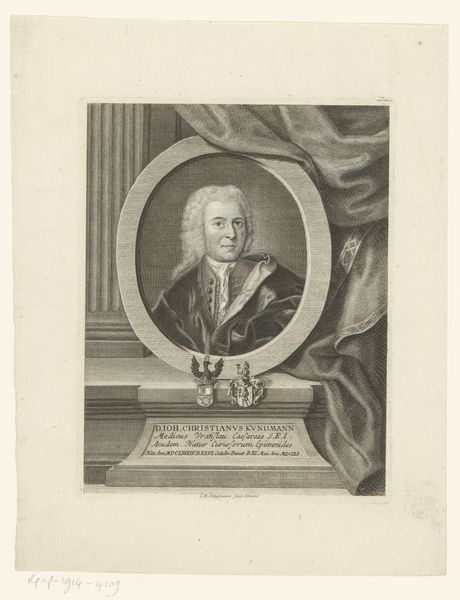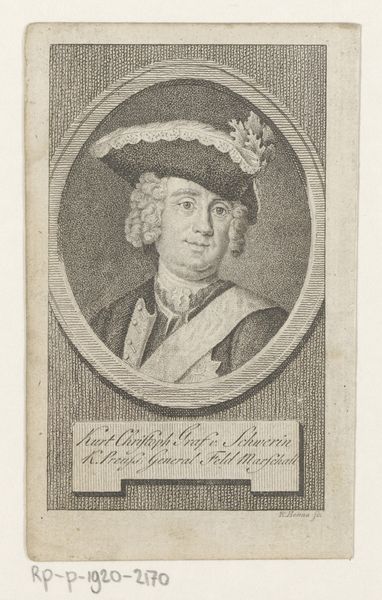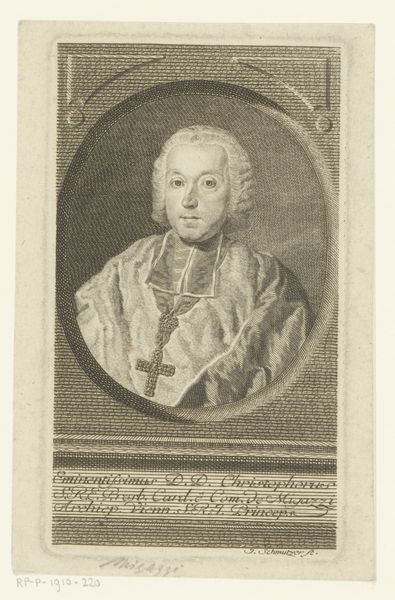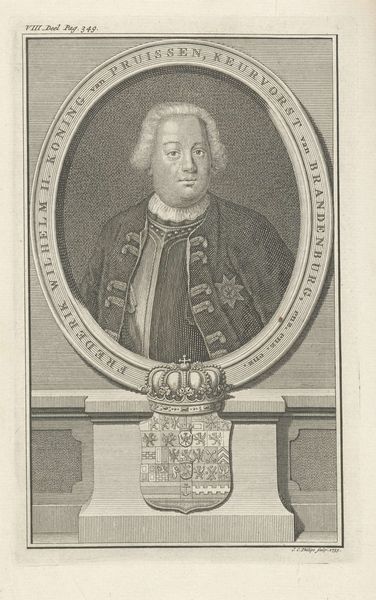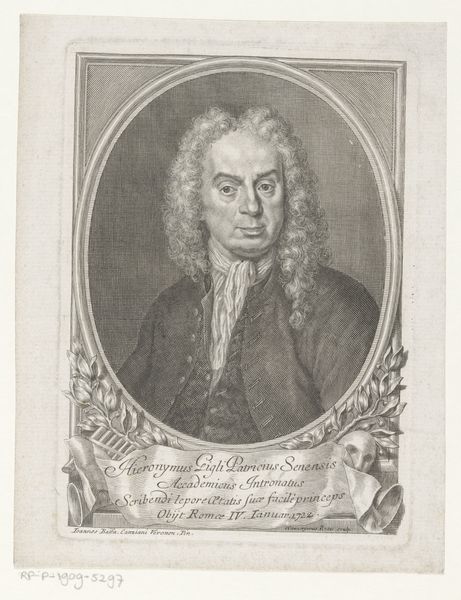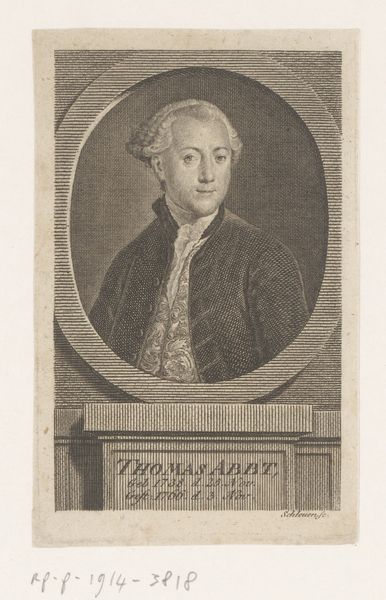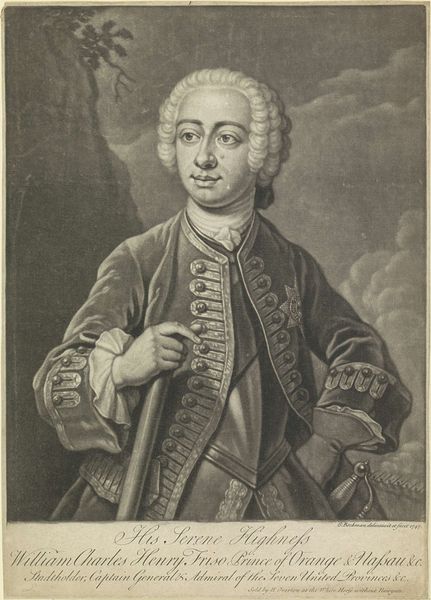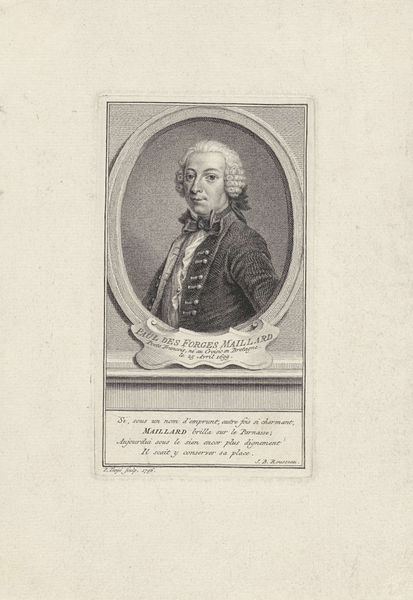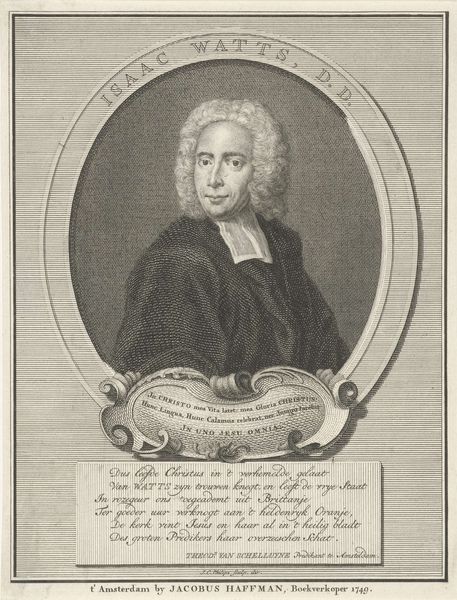
Dimensions: height 194 mm, width 115 mm
Copyright: Rijks Museum: Open Domain
Editor: So, we’re looking at a portrait today – "Portret van Joachim Georg Darjes" from 1766, made by Georg Christoph Schmidt. It’s an engraving, a print. It has that very serious, almost stern feeling that portraits of this era often do. The detailing in the frame and clothing seems incredibly precise. What stands out to you in this piece? Curator: Oh, my dear, isn't it intriguing how a few etched lines can evoke such presence? I see Darjes caught in a moment, perhaps pausing from weighty matters of state – or at least, that’s the impression he wants to convey! It is such a Baroque statement, an exercise in self-fashioning if ever I saw one. Think of the era! It's a time of great confidence in reason and progress, and the ornamentation screams "status". What do you make of the text inscribed below? Does it tell us anything about this carefully constructed image? Editor: It seems to list his titles – something about "Borufsor Reg" and "Confil intim," and "Dost in Viadruja." Probably something very important and impressive! But beyond pure description, is there something the portrait is trying to say, or maybe hide? Curator: Precisely! Consider how Schmidt uses line and shadow. Look closely at his gaze – direct, unwavering, yet softened, perhaps, by a hint of intellectual curiosity. It’s not just about power; there's an implication of wisdom, of enlightened leadership. The elaborate frame is a proscenium, isn't it? A stage upon which Darjes performs his identity. What stories do you think Darjes wanted people to tell about him? Editor: That he was powerful, important, and wise, all rolled into one! I guess those things were all wrapped up together then, weren't they? Curator: Indeed. Power was inextricably linked to knowledge and perceived virtue. What’s striking, however, is how these small prints served to disseminate that cultivated persona. They carried those aspirations into drawing rooms and libraries – a carefully crafted echo of the man himself. It makes you wonder, doesn't it, about the power of the image, even then? Editor: It really does. Now I look at it I can really appreciate that combination of showing position but also creating this 'ideal man', this figure of respect. Thanks.
Comments
No comments
Be the first to comment and join the conversation on the ultimate creative platform.
